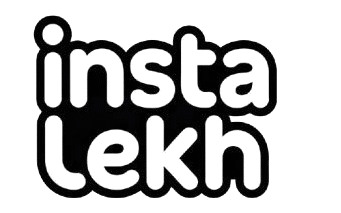Introduction
The NYT Connections puzzle is more than just a brain-teasing challenge it tests your ability to spot patterns, group words logically, and think creatively under pressure. From my experience, both casual and dedicated players can hit a roadblock, and this is where Mashable hints provide subtle guidance without giving away the solution. This comprehensive guide equips you with effective strategies, shows how to avoid common pitfalls, and helps sharpen your problem-solving skills, making the puzzle-solving process more efficient and enjoyable. Whether you’re a beginner seeking a starting point or a seasoned solver refining your approach, the right mix of tools and mindset can transform the experience.
Delving deeper, understanding the basics of the game naturally leads to advanced techniques and cognitive benefits. Breaking down each aspect step by step allows you to gain insights into the thinking behind the puzzles, making the journey rewarding. By embracing both logical and creative approaches, players can continuously evolve their approach, tackle new puzzles with confidence, and enjoy the mental stimulation of recognizing subtle patterns. Mashable hints act as helpful nudges, keeping the challenge dynamic while maintaining the satisfaction of discovery.
What Even Is the NYT Connections Puzzle, Anyway?
The New York Times Connections puzzle
When I first tried the New York Times Connections puzzle, I was struck by how popular it has become since its launch in 2023. Unlike traditional crosswords or word searches, this daily challenge demands pattern recognition and logical grouping rather than just word knowledge. Each puzzle gives you 16 words, which you need to sort into 4 groups of 4 words each, with every group sharing a common connection. It may seem straightforward, but the presence of multiple potential groupings makes it a true test of vocabulary and critical thinking.
Key Features of the NYT Connections Puzzle
From my experience, the real thrill lies in the 16 words you have to sort into 4 groups of 4 words carefully intentionally chosen to allow multiple interpretations. You can make a few mistakes before the puzzle ends, and the daily resets at midnight ensure there’s always a fresh challenge waiting. I’ve noticed that pattern recognition, lateral thinking, and strategic decision-making become second nature after a few rounds, turning what seems like a simple puzzle into an engaging daily mental workout.
Why It’s Different from Other Word Games
What sets this puzzle apart for me is the way 16 words must be carefully sorted into 4 groups of 4 words, each intentionally chosen to offer multiple interpretations. Even after years of crosswords and word searches, I found that this daily challenge pushes you into lateral thinking, strategic decision-making, and refined pattern recognition in a way that feels both fresh and demanding. Making a few mistakes before the puzzle ends only adds to the excitement, and the daily resets at midnight bring a new set of fresh challenges, keeping each session engaging and rewarding.
In practice, the skill lies in spotting subtle overlaps and connections within the 16 words, testing different possibilities until everything falls into the 4 groups of 4 words seamlessly. Over time, this approach sharpens your ability to navigate ambiguity, consider multiple interpretations, and develop a mindset geared toward clever, efficient strategic decision-making while enjoying a truly dynamic daily mental workout.
Color-Coded Difficulty Level
| Difficulty Level | Color | Typical Characteristics |
| Easiest | Yellow | Straightforward associations, easy to identify |
| Moderate | Green | Requires broader vocabulary and some lateral thinking |
| Challenging | Blue | Includes obscure connections, wordplay, or hidden meanings |
| Hardest | Purple | Highly abstract, multiple interpretations, tricky groups |
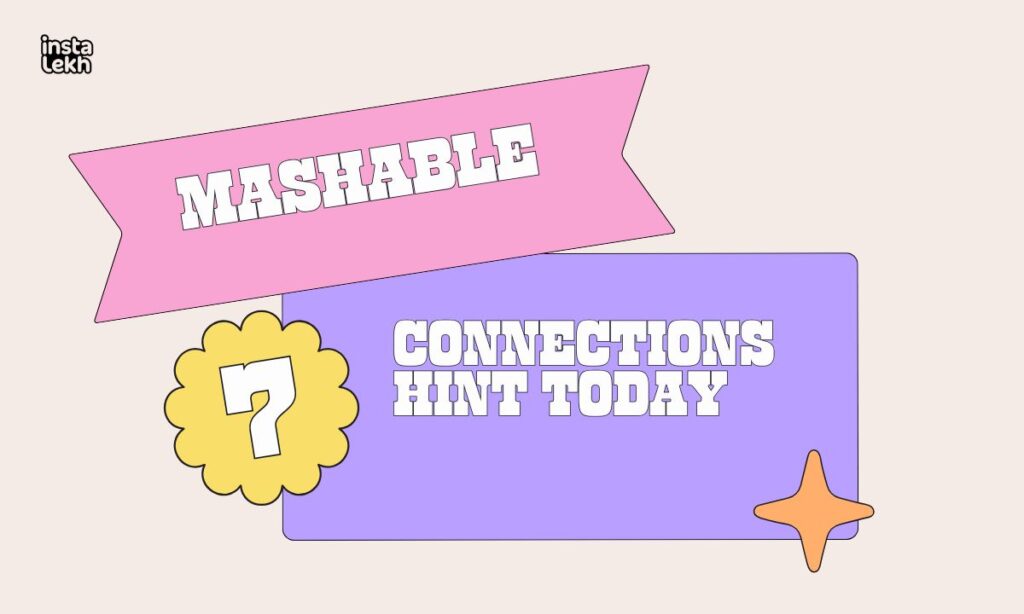
So, What’s This “Mashable Connections Hint System” Everyone’s Talking About?
As someone who enjoys tackling NYT Connections puzzles, I’ve found Mashable Connections to be an invaluable resource. The Hint System offers strategic guidance that nudges you in the right direction without revealing the solution, making it ideal for both beginners and experienced solvers. These hints allow enthusiasts like me to approach each puzzle with confidence, providing subtle support that enhances problem-solving rather than replacing it, and helping refine skills while keeping the challenge engaging.
Key Features of Mashable Hints
- Hints from Mashable Connections are published daily alongside each puzzle, offering directional guidance to help solvers identify potential connections.
- The system avoids spoiling the solution, giving players a real sense of accomplishment with every success.
- The structured format provides different levels of help, allowing individuals to choose the amount of assistance they need.
- These hints encourage critical thinking and pattern recognition over simple rote solving, enhancing long-term puzzle-solving skills.
Benefits of Using Mashable Hints
- Using Mashable hints can help players overcome roadblocks when a puzzle feels stuck, turning moments of frustration into opportunities to see patterns they might have missed.
- The hints act as a learning tool rather than a shortcut, subtly teaching strategies that improve overall puzzle-solving ability.
- Thoughtful subtle nudges from the hints can increase confidence and reduce frustration, making the puzzle experience more engaging and rewarding.
How Solvers Typically Use the Hints
- Many expert solvers start with vague category hints that act as a gentle guide, helping them approach a group that feels difficult without overwhelming them.
- When needed, they move to more specific hints or “almost-there” hints if truly stuck, using each clue strategically to uncover subtle clues and discover new ways to tackle challenging puzzles.
- This method enhances the overall puzzle-solving experience, gradually making players faster, more accurate, and better at identifying word groupings.
- Over time, the hints serve as both a guide and training tool, turning every daily puzzle into a richer and more rewarding challenge, while improving skills with each attempt.
Mashable Connections Hint System: Not Just Training Wheels
Many people assume that hints are only for beginners, but that couldn’t be further from the truth. The Mashable Connections Hint System is designed to support solvers of all levels, including experts who want to refine their strategy or tackle the most challenging categories.
Why Hints Aren’t Just for Beginners
- Experienced solvers often consult hints to gain new perspectives and train pattern recognition skills.
- These hints help players understand the logic behind difficult word groupings and can be used strategically to save time on complex puzzles.
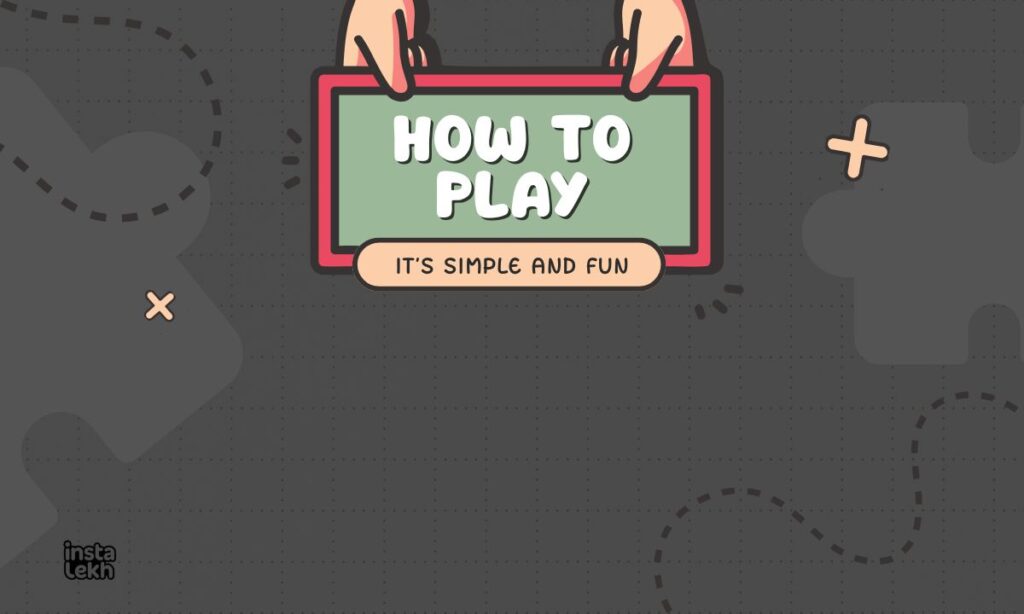
Learning Through Hints
- Hints expose solvers to different thinking frameworks and approaches, encouraging analytical thinking while teaching players to consider multiple possibilities for each word.
- Over time, solvers internalize these strategies, gradually relying less on hints, which helps identify mistakes and improve accuracy.
Professional Approach
- Puzzle experts study solved puzzles to understand constructor patterns, and Mashable hints replicate this experience by providing subtle insights without giving away answers.
- They help solvers anticipate potential pitfalls and recognize red herrings more quickly, enhancing problem-solving efficiency.
Key Takeaways
- Hints serve as educational tools, not crutches, and can accelerate learning while keeping the puzzle challenging and engaging.
- Strategic use of hints enhances speed and accuracy, and solvers who use them regularly develop a stronger intuition for connections.
In short, the Mashable Connections Hint System is much more than “training wheels.” It’s a strategic learning tool that sharpens your skills, enhances pattern recognition, and makes even the toughest puzzles approachable without removing the satisfaction of solving them independently.
Strategies to Solve the NYT Connections Puzzle Faster
Start by scanning all 16 words to identify the most obvious category first—usually the yellow group with straightforward connections. Look for patterns like synonyms, items in the same category, or words that complete common phrases. Avoid jumping to conclusions too quickly, as words often have multiple meanings designed to mislead you. Save the trickiest purple category for last, and use your four mistakes wisely by testing groups you’re most confident about first.
Key Tips for Faster Solving
- Scan for the easiest group first
Identify the most obvious connections (usually yellow) and clear them off the board immediately to reduce confusion.
- Look for complete phrases or sayings
Words that can follow or precede the same word often form a category (e.g., “BEAR, BULL, TIGER, LION” might all be “market” terms).
- Watch out for red herrings
The puzzle is designed to trick you with words that seem related but belong to different categories, so double-check before committing.
- Group by word type or pattern
– Sometimes categories are based on parts of speech, word length, or structural patterns rather than meaning.
- Don’t guess randomly when stuck
Use your four mistakes strategically by only testing groups where you’re confident about at least three of the four words.
- Save the purple category for last
The hardest group often becomes clearer once you’ve eliminated the other three categories from the board.
- Think about wordplay and double meanings
Purple categories especially love puns, homophones, and words with multiple interpretations.
- Start with what you know, not what you think
Begin with certainties rather than hunches to build momentum and narrow down remaining options.
Identifying and Understanding Puzzle Themes
- Lexical categories: verbs, adjectives, nouns.
- Cultural references: movies, songs, celebrities.
- Word associations: homophones, puns, idioms.
- Abstract categories: time, emotions, metaphors.
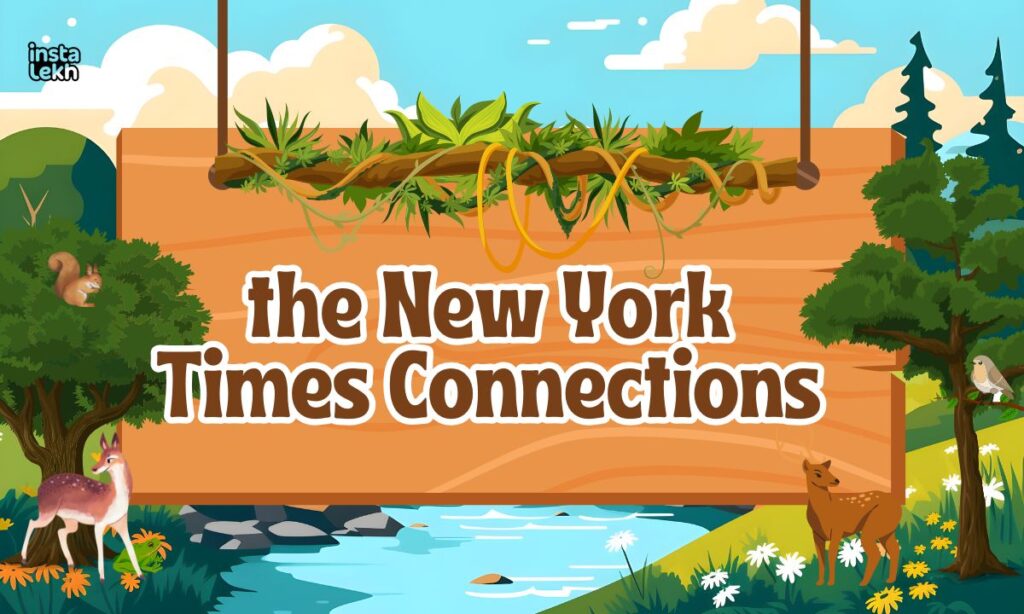
Real-World Walkthrough: Let’s Solve One Together
learning by example is one of the best ways to master the NYT Connections puzzle. Let’s go through a sample puzzle step by step and see how to approach grouping words logically.
Imagine the 16 words are:
BANK, POOL, TABLE, TRUST, SPRING, FALL, BILL, CHECK, RESERVE, CABINET, DRAWER, SUMMER, WINTER, COUNTER, SAFE, VAULT
Step 1: Identify the Easiest Group
Starting with SPRING, SUMMER, FALL, and WINTER immediately sets up a seasons group. Choosing the easiest category first gives momentum, clears the board, and makes tackling challenging connections feel manageable.
Step 2: Spot Financial or Banking Terms
Words like BANK, RESERVE, VAULT, and TRUST form a finance-related group, with BILL and CHECK as flexible options depending on interpretation and possible alternatives, making them strong candidates for the next set.
Step 3: Find Storage or Furniture Connections
The CABINET, DRAWER, SAFE, and COUNTER suggest a storage or furniture category. Considering context, whether household items, office storage, or secure storage, helps before finalizing the grouping.
Step 4: Analyze Remaining Ambiguous Words
The POOL, TABLE, BILL, and CHECK can be tricky. Potential meanings include POOL TABLE as a game, CHECK/BILL in financial context or restaurant context, and TRUST as a trust fall exercise. Systematically testing different theories helps avoid mistakes.
Step 5: Final Verification and Grouping
Reviewing all words ensures each group has a clear and specific connection. A possible solution is Seasons: SPRING, SUMMER, FALL, WINTER; Finance Terms: BANK, RESERVE, CABINET, BILL; Games/Activities: POOL, TABLE, CHECK, TRUST; Storage/Furniture: DRAWER, COUNTER, VAULT, SAFE.
Additional Tips
Words often have multiple interpretations, so double-check before grouping. Start with obvious categories to reduce complexity, use logical testing for ambiguous words rather than guessing, and confirm that each group connection is specific and meaningful. Following a step-by-step approach improves speed and accuracy over time.
Advanced Solving Techniques Beyond Hints
- Spotting homophones. Words that sound alike often form sneaky categories.
- Checking hidden meanings. For example, “bass” could mean a fish or a musical tone.
- Noticing phrase construction. Words may combine into famous sayings.
- Filtering overlaps. A word may fit two groups, but only one is correct watch carefully.
Common Mistakes People Make (And How to Dodge ‘Em Like a Space Rock)
Rushing to Group Obvious Words – Just because four words seem related doesn’t mean they’re in the same category. The puzzle loves to put similar words in different groups to throw you off. Take a breath, consider alternative meanings, and make sure all four words truly share the exact same connection before locking in your guess.
Ignoring Multiple Word Meanings – Words often have double meanings or can be interpreted in different ways. That’s the puzzle’s favorite trick! Always ask yourself: “Could this word mean something else?” A word like “BARK” could relate to dogs or trees, and “CAPITAL” could mean money, a city, or a letter.
Using Up Mistakes Too Early Don’t treat your four strikes like throwaway guesses. Each mistake is precious, especially when you’re down to the final categories. If you’re only 75% sure about a group, pause and reconsider sometimes waiting and solving other categories first reveals the correct answer.
Overthinking the Easy Categories – Sometimes yellow and green groups are genuinely straightforward, but players second-guess themselves looking for hidden tricks. Trust your instincts on the simpler connections and save your mental energy for the purple category where the real brain-benders hide.
Quick Dodge Tips
- The Trap: Grouping words by loose association (e.g., all “water-related”)
- The Dodge: Look for the specific connection are they types of water bodies, water activities, or phrases with “water” in them?
- The Trap: Committing to your first instinct without checking alternatives
- The Dodge: Before submitting, ask “Could any of these words fit better elsewhere?”
- The Trap: Forgetting about wordplay until you’re stuck
- The Dodge: From the start, consider homophones, abbreviations, and words that sound like other words
- The Trap: Solving categories in color order (yellow → green → blue → purple)
- The Dodge: Solve whichever category clicks first, regardless of difficulty level sometimes purple is more obvious than green!
How the Three-Tier Hint System Works
Tier 1 – Gentle Guidance:
The first level of the three-tier hint system gives a soft push in the right direction. It offers vague category hints that help you sense a possible theme without revealing any exact word groupings. This stage is perfect for players who are slightly stuck but still want to rely on their own pattern recognition and logical thinking. It maintains the balance between challenge and learning, allowing you to enjoy the process while sharpening your instincts.
Tier 2 – Focused Clarity:
At this level, the hints become more specific. The system starts pointing out relationships between words, giving you directional guidance toward potential connections. It’s especially helpful when you’ve already narrowed down some options but can’t quite identify the remaining groups. This middle tier encourages strategic decision-making, helping solvers build confidence as they work through trickier patterns.
Tier 3 – Direct Insight:
The final tier provides almost-there hints, giving clear, focused clues without fully revealing the solution. This stage is best used when you’re truly stuck and want to understand the puzzle’s logic rather than just get the answer. It’s a smart way to learn from your mistakes and improve future performance, turning each daily puzzle into a more rewarding and educational experience.
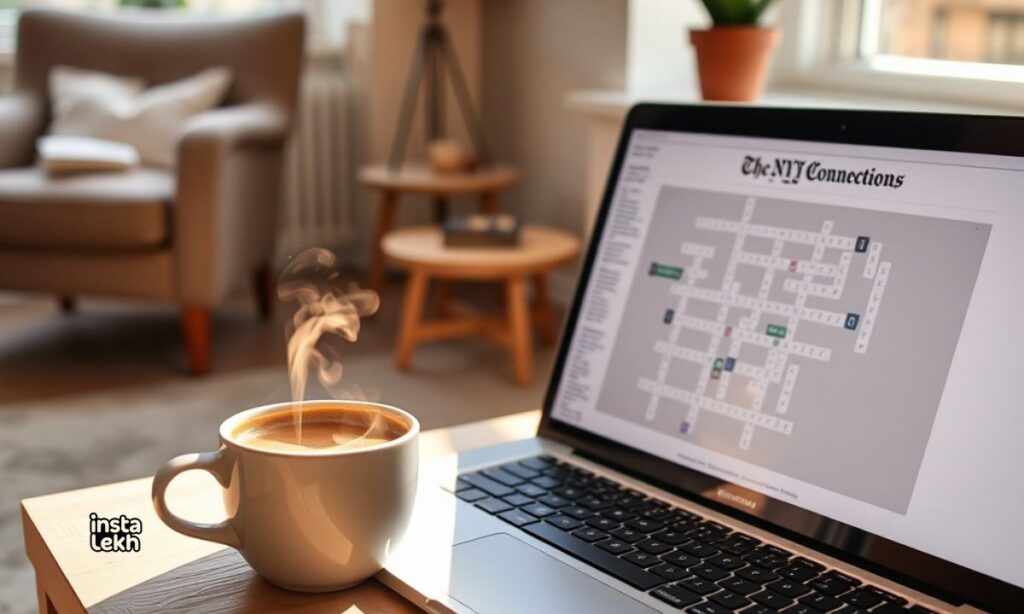
Top 12 Mistakes to Avoid in NYT Connections
1. Guessing Without a Full Group – Submitting a guess when you’re only confident about 2-3 words wastes your limited mistakes. Always wait until you’re certain about all four words in a category before clicking submit.
2. Ignoring Word Context and Multiple Meanings – Words like “SPRING,” “FAST,” or “LIGHT” have multiple meanings. The puzzle exploits this by placing similar-looking words in completely different categories based on alternate definitions.
3. Grouping by Vague Associations – Thinking “these all feel related to nature” isn’t specific enough. The connection must be precise—are they types of trees, flower parts, or words that follow “wild”?
4. Rushing Through the Yellow Category – Even the “easiest” category can have tricks. Just because something seems obvious doesn’t mean it’s correct—always verify the connection applies equally to all four words.
5. Forgetting About Common Phrases – Many categories involve words that precede or follow the same word (like “_____ chip” or “top ___”). Miss this pattern and you’ll struggle to find the connection.
6. Overthinking Simple Connections – Sometimes a category really is just “types of birds” or “shades of blue.” Don’t invent complexity where none exists, especially in yellow and green categories.
7. Not Considering Wordplay Early Enough – Homophones (“BARE/BEAR”), words within words, or abbreviations often appear in purple categories. Think about these possibilities from the start, not as a last resort.
8. Submitting Partial Patterns – Finding three words that clearly go together doesn’t automatically mean your fourth guess is correct. That remaining word might be a red herring placed there deliberately.
9. Giving Up on Elimination Strategy – When stuck, don’t keep staring at the same 16 words. Sometimes solving one “easier” category reveals what’s left and makes the harder categories suddenly obvious.
10. Ignoring Category Balance – Each group has exactly four words—no more, no less. If you’re trying to force five words into one theme, you’re on the wrong track.
11. Missing Proper Nouns or Brand Names – Categories can include famous people, places, brands, or titles. Don’t dismiss words like “JORDAN” or “APPLE” as too specific—they might be the key.
12. Not Learning from Previous Puzzles – Connections reuses certain types of categories: “belt,” “starts with the same letter as…,” or “anagrams of…” Pay attention to recurring patterns to get faster over time
How to Write Your Own “Mashable-Style” Hints (Yes, You Can)
Writing effective Connections hints is an art form that balances helpfulness with preserving the puzzle’s challenge. The key is to guide solvers toward the answer without simply handing it to them on a silver platter. Start by identifying each category’s core connection, then work backwards to create progressively revealing clues that respect the solver’s intelligence.
Begin with the broadest possible hint
Your first clue should nudge players in the right direction without giving away the specific answer. Instead of saying “types of pasta,” try “Think Italian cuisine” or “These all appear on a menu at your favorite trattoria.” This lets solvers make the final leap themselves.
Use thematic descriptions rather than direct answers
Frame your hints around the feeling or concept of the category. For a group of words that precede “chip,” you might say “These words all share a crunchy companion” rather than stating the pattern outright.
Layer your hints from gentle to specific
Create three levels: a vague theme hint, a more direct clue about the connection type, and finally a nearly-complete giveaway. This structure lets readers choose their own difficulty level and stop reading when they’ve got enough help.
Pay attention to difficulty colors
Yellow hints can be more straightforward since these are meant to be easy. Green and blue need moderate mystery. Purple hints should start extremely vague because these categories are designed to be mind-bending and require the most lateral thinking.
Incorporate playful language and personality
Mashable’s style is conversational and slightly cheeky. Use phrases like “Here’s where it gets tricky” or “Don’t overthink this one” to create a friendly, encouraging tone that makes getting help feel less like cheating.
Avoid spoilers in your setup text
Never mention specific words from the puzzle in your hint descriptions. Instead of “If you’re stuck on BARK and BRANCH,” say “If you’re struggling with the nature-themed words.” This prevents accidental reveals for people still solving.
Test your hints on someone else
Before publishing, have a friend read your hints without seeing the puzzle. If they can guess the exact answer from your first hint, it’s too specific. If they’re completely confused by your third hint, you need to be clearer.
Include example connections from past puzzles
Help readers understand your hint style by referencing similar categories from previous days. “Like yesterday’s color category, but think objects instead” gives context without spoiling today’s puzzle.
Address common misconceptions
If certain words seem like obvious red herrings, acknowledge this: “Yes, these three words seem connected, but the fourth one probably isn’t what you think.” This validates the solver’s thought process while steering them away from dead ends.
Time your hint reveals strategically
Structure your article so hints appear progressively down the page with clear warnings like “SPOILER ALERT: More specific hints below.” This gives readers control over how much help they receive and prevents accidental scrolling spoilers.
Embrace the meta-commentary
Mashable-style hints often comment on the puzzle’s difficulty or cleverness: “Today’s purple category is diabolical” or “This one had us stumped for ages.” This builds community and makes solvers feel less alone in their struggles.
End with encouragement, not just answers
Your final section should celebrate the solver’s effort, whether they needed help or not. Something like “However you got there, nice work puzzler!” maintains the positive, supportive vibe that makes hint articles so popular.

Cognitive Benefits of Puzzle Solving (Science Time!)
Cognitive Benefits of Puzzle-Solving
From my own experience, regularly solving puzzles like NYT Connections feels less like entertainment and more like a mental workout for the brain. These word games, when engaging with them daily, truly strengthen memory, enhance problem-solving skills, and improve pattern recognition. The mental effort needed to group words, interpret multiple meanings, and test hypotheses constantly stimulates different areas of the brain. Over time, this leads to measurable cognitive improvements, proving that small, consistent exercises have a lasting impact.
Research and Mental Flexibility
Recent research confirms that frequent puzzle-solving enhances working memory and the ability to hold and manipulate information temporarily. I’ve found these improvements to be critical not only for games but also for everyday tasks, learning, and professional decision-making. Incorporating regular mental exercises like puzzles helps increase mental flexibility, allowing the mind to adapt to new challenges more efficiently and stay sharp under pressure.
Processing Speed and Problem-Solving
Another major benefit of consistent puzzle-solving is improved processing speed. As solvers practice recognizing word patterns and connections, they begin making decisions faster while maintaining accuracy. I’ve noticed that this process reduces puzzle-solving time and strengthens general problem-solving capabilities, making the brain not just quicker but also more sharper and agile in everyday decision-making.
Long-Term Cognitive Health
Engaging with puzzles over time can contribute greatly to long-term cognitive health. Studies show that mentally stimulating activities can delay cognitive decline and improve neuroplasticity, enhancing the brain’s ability to form new neural connections. These habits bring lasting benefits to both younger and older adults, promoting better overall brain function. From what I’ve observed, sticking with these routines keeps the mind active, resilient, and continuously growing.
.Scientific Research Findings
| Cognitive Benefit | Research Evidence | Real-World Application |
| Memory Enhancement | 15–20% improvement in recall tasks | Better retention of information at work/school |
| Processing Speed | Faster decision-making abilities | Quicker responses in daily problem-solving |
| Mental Flexibility | Enhanced creative and adaptive thinking | Improved problem-solving and adaptability |
| Delayed Cognitive Decline | 2–3 year delay in dementia-related symptoms | Healthier aging process |
| Pattern Recognition | Significant improvement with practice | Easier identification of relationships in tasks |
Strategies to Improve Your NYT Connections Skills
Improving at the NYT Connections Puzzle
Getting better at the NYT Connections puzzle isn’t about luck but mastering a systematic approach. Even seasoned solvers can enhance their speed and accuracy by applying thoughtful strategies rooted in pattern recognition, sharp observation, and logical grouping. With regular practice and analytical thinking, even a challenging puzzle can turn into a deeply satisfying mental exercise that sharpens focus and reasoning.
Starting with the Easiest Groups
One of the most effective strategies I’ve learned is to begin with the easiest groups. The yellow category usually includes words with obvious connections, and solving them early helps reduce confusion around harder groups. That initial success doesn’t just build confidence; it lays a foundation for handling complex puzzles more efficiently.
Practical Tips to Improve Your Skills
Before jumping in, scan all the words carefully before selecting any. Observe patterns and identify potential connections. Many words have multiple meanings or are intentionally ambiguous, so consider alternative interpretations. Prioritize pattern recognition by spotting common prefixes, suffixes, phrases, or relationships. Use the process of elimination—if a word clearly fits a category, that can narrow remaining possibilities. Track time as you go and challenge yourself to gradually reduce solving time without losing accuracy. Practice daily; regular engagement improves mental agility, vocabulary, and lateral thinking. After finishing, review solutions and analyze why each word belongs to its group this reflection is key to growth.
Study Past Puzzles
Another valuable tip is to study past puzzles. By observing previous word groupings, you’ll recognize common themes, wordplay tactics, and constructor patterns. Many puzzles reuse subtle structures or rely on similar connections, so familiarity becomes an advantage over time. I’ve noticed that the more I revisit old puzzles, the more intuitive my solving process becomes.
Strategic Use of Hints
Using strategic hints especially Mashable-style hints—isn’t cheating; it’s smart. These can guide you toward patterns you might have missed, offering insights into the constructor’s logic. When used as a learning tool, hints can accelerate skill development and even teach you to think like a puzzle designer, turning each challenge into a learning moment.
Consistent Practice and Improvement
By applying strategies consistently, solvers can improve accuracy, efficiency, and confidence. Even challenging purple categories that once felt impossible become manageable. With time, the overall puzzle experience becomes truly rewarding and deeply enjoyable, showing how much growth can come from persistence and curiosity.
Solving the NYT Connections Puzzle Daily
Working through the NYT Connections puzzle on a daily basis transforms each challenge into a true learning opportunity. Every game introduces new words, unique associations, and evolving patterns that sharpen your analytical mindset. By following a systematic approach, you gradually enhance your mental agility, expand your vocabulary, and build critical thinking abilities. I’ve found that approaching each puzzle intentionally—by observing how words relate and testing multiple hypotheses before finalizing groups—leads to consistent improvement and deeper understanding of linguistic connections.
Analyzing Mistakes and Building Instincts
Taking the time to analyze mistakes after solving can be surprisingly powerful. Every wrong selection offers insight into potential pitfalls, helping you recognize red herrings, ambiguous words, and tricky patterns that might have been missed before. Reflecting on these errors develops stronger problem-solving instincts, allowing you to make faster and more accurate decisions in future puzzles. Personally, this process has turned my missteps into valuable feedback, shaping a more efficient and strategic approach.
Tips to Maximize Learning
Consistent daily practice helps you engage with puzzles more regularly, strengthening pattern recognition and mental endurance. Track your time and monitor gradual improvement—but avoid rushing, as thoughtful solving builds precision. Use hints strategically; Mashable-style hints serve as excellent learning tools, not shortcuts, guiding you to understand why certain words belong together. Review patterns like recurring themes, prefixes, suffixes, or familiar phrases. Also, reflect on word associations, analyzing how ambiguous words were placed in their groups to improve lateral thinking and adaptability.
Balancing Challenge with Learning
It’s essential to balance challenge with learning. Start each session by tackling easier categories first to build confidence, then move toward harder ones to stretch problem-solving skills. Over time, even difficult purple categories feel less intimidating as you gradually develop an intuitive sense for likely word groupings. This structured yet flexible approach transforms frustration into a motivating learning curve.
Sharing and Discussion
Engaging in sharing and discussing puzzles with friends or in online communities can be just as rewarding as solving alone. Through social engagement, you gain multiple perspectives and discover alternative strategies you may not have considered. Explaining your thought process or seeing others’ approaches helps deepen understanding and reinforce learning, making the experience more enjoyable and intellectually stimulating.
Building EEAT: Why Trust Mashable-Style Hints
Mashable-style hints have earned a reputation for being reliable, transparent, and thoughtfully designed qualities that naturally build EEAT: Expertise, Experience, Authoritativeness, and Trustworthiness. What sets them apart is their ability to blend educational value with genuine user support. These hints aren’t random guesses or oversimplified clues; they’re crafted through analytical insight, ensuring that every nudge encourages critical thinking rather than spoon-feeding answers.
From personal use, I’ve found that these hints mirror the mindset of expert solvers and puzzle constructors. They reflect an understanding of logic, context, and word associations, helping players learn as they play. The structure of Mashable’s guidance—progressive, transparent, and unbiased demonstrates a commitment to accuracy and fair play. Over time, players begin to trust the process because it consistently reinforces their problem-solving skills while maintaining the integrity of the puzzle. In short, Mashable-style hints don’t just guide you to solutions they teach you how to think like a solver, building both confidence and cognitive credibility.
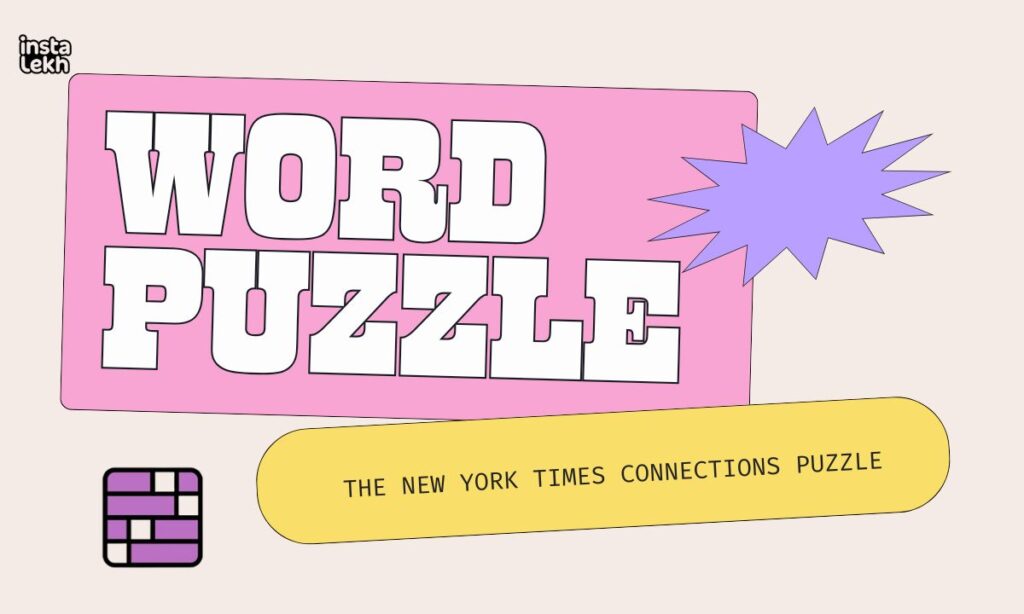
Checklist for Using Today’s Mashable Connections Hint
Before diving in, follow this quick checklist:
- Read all 16 words.
- Find one or two obvious links.
- Check Tier 1 for gentle direction.
- Confirm ideas with Tier 2.
- Use Tier 3 only if truly necessary.
- Reflect and note the category patterns for next time.
Following this sequence keeps the game fun and educational while improving your natural solving ability.
Frequently Asked Questions’
When does the NYT Connections puzzle reset?
The puzzle resets daily at midnight according to your device’s local time. Each day introduces a fresh set of 16 words and new challenges.
Are Mashable hints considered cheating?
No. Mashable hints are learning tools. They provide subtle guidance to help you identify patterns without revealing the complete solution.
How many mistakes am I allowed?
You are allowed four mistakes per puzzle. These can be used strategically to test connections or fix minor errors during gameplay.
What’s the hardest Connections category?
The purple category is consistently the most challenging, often including wordplay, abstract connections, or multiple interpretations.
Can I play past Connections puzzles?
Officially, NYT does not allow access to past puzzles. Some archives and fan sites do maintain previous puzzles for practice and skill-building.
Do I need a NYT subscription to play?
Connections is currently free to play. While other NYT content may require a subscription, this puzzle does not.
How can I get better at spotting purple categories?
Focus on non-obvious connections like idioms, phrases, prefixes/suffixes, and words that can precede or follow common terms. Patience and systematic testing are key.
Why do some words fit multiple categories?
This is intentional. Ambiguous words increase the challenge, requiring you to identify the constructor’s intended grouping among multiple possibilities.
Should I start with easy or hard categories?
Begin with easier groups, like yellow, to reduce complexity. Solving obvious categories first makes the harder groups more manageable.
How long does the average person take to solve?
Most players finish in 3–10 minutes, while experienced solvers can complete puzzles in under 3 minutes with consistent practice.
Can Connections improve my vocabulary?
Yes. Playing daily exposes you to new words and word relationships, naturally enhancing your vocabulary over time.
What if I can’t solve the purple category?
Don’t worry. The purple category is designed to challenge advanced thinking. Use hints, analyze patterns, and systematically test possibilities to gradually improve.
Conclusion
Mashable Connections Hint is a great tool for anyone who loves word puzzles. It helps players understand how to spot patterns and solve tough groups. With simple hints, it keeps the fun of the game while offering just enough help. It’s the perfect balance between learning and playing.
Using this guide can make you more confident with each puzzle you try. It teaches you to think carefully about words and their meanings. Over time, you’ll start seeing connections faster on your own. Mashable Connections Hint turns practice into real progress.

John has 4 years of experience in writing quotes and poetry. Now, he shares his words and thoughts with a wider audience through Instalekh.com, touching hearts and inspiring minds with every line he writes.
